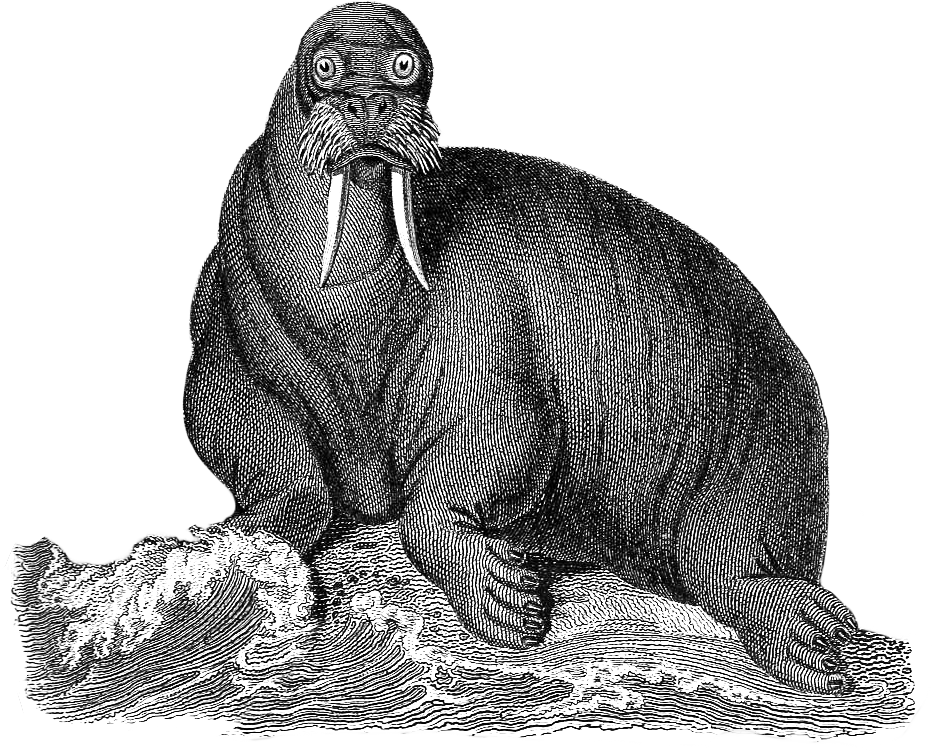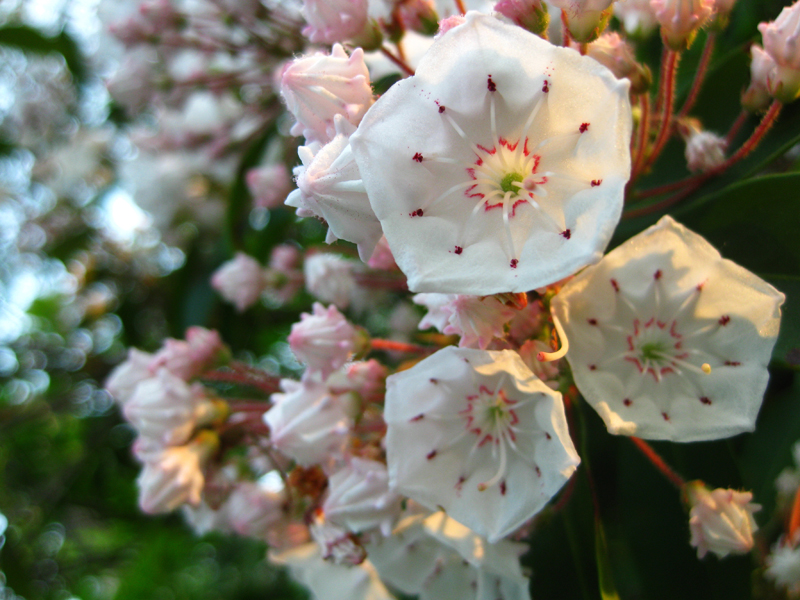 About a year ago, I decided that keeping track of bloom dates, bird arrivals and other natural events would help me grow as an amateur naturalist. “According to my sources and personal records,” wrote a local naturalist celebrity, “this is the best spring for mountain laurel blooms here in the past fifteen years.” I grinned when I read this last May. I had found and identified a stand of blooming mountain laurel for the first time the previous evening. After reading the article, I jotted my laurel observation in a notebook, hoping that recording what I saw, what happened and when, would help me understand how nature marks the passing of a year. Continue reading
About a year ago, I decided that keeping track of bloom dates, bird arrivals and other natural events would help me grow as an amateur naturalist. “According to my sources and personal records,” wrote a local naturalist celebrity, “this is the best spring for mountain laurel blooms here in the past fifteen years.” I grinned when I read this last May. I had found and identified a stand of blooming mountain laurel for the first time the previous evening. After reading the article, I jotted my laurel observation in a notebook, hoping that recording what I saw, what happened and when, would help me understand how nature marks the passing of a year. Continue reading
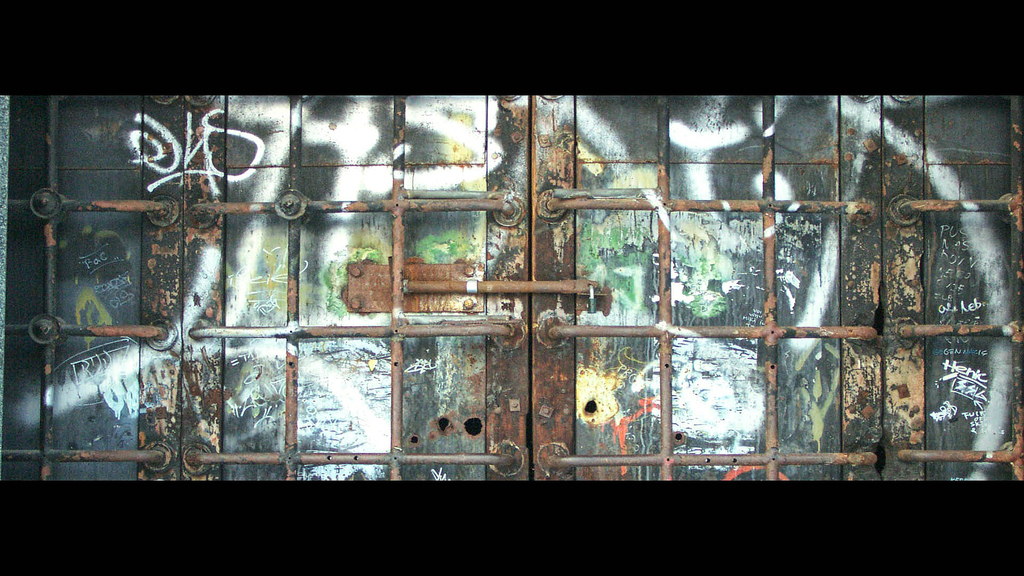 Science, so useful to our lives in so many ways, also usefully supplies metaphors from which we may find comfort or edification.
Science, so useful to our lives in so many ways, also usefully supplies metaphors from which we may find comfort or edification.
An astronomer told me that the galaxy we live in, the Milky Way, was surrounded by a tenuous halo of hot gas. “How can gas stay hot, out there in space?” I asked. “It doesn’t,” he said. “Either it cools and falls [because cold falls, you knew that, didn’t you] slowly into the galaxy. Or maybe it’s already cooled and drops like a brick.”
He didn’t know which: the Milky Way simulated on a computer is too large to show whether things as small as gas clouds were drifting or plummeting. So the small stuff is estimated and put in by hand. “It’s sub-grid physics,” he said, “wave your magic wand at a square in the grid.” Sub-grid physics: the big stuff you know; but the small stuff, you just make shit up. Continue reading
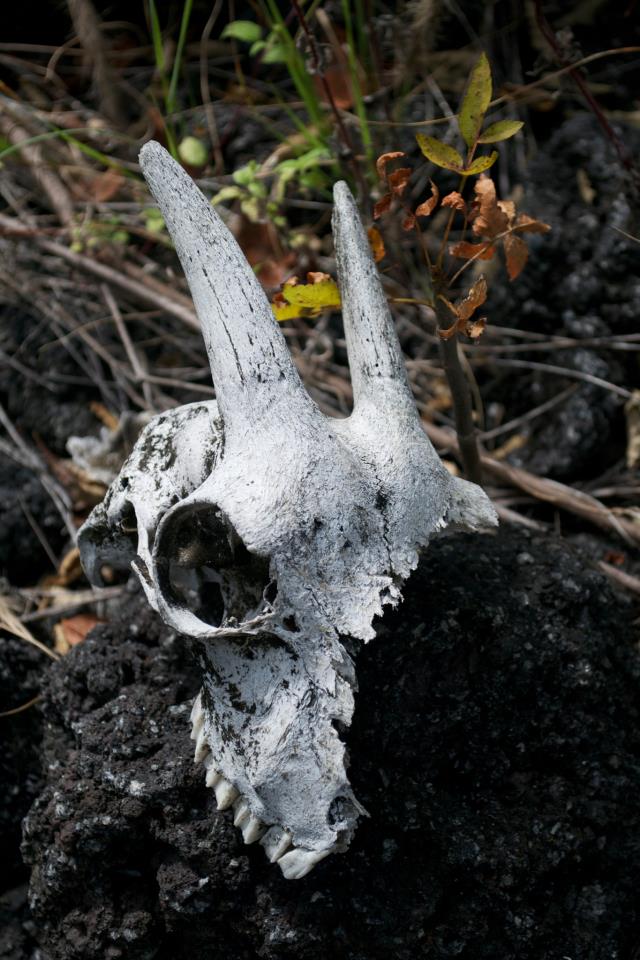 Judas knew what he was doing when he double-crossed his friend Jesus. “What will you give me if I betray him to you?” he asked the conspiring priests in the famous Bible story.
Judas knew what he was doing when he double-crossed his friend Jesus. “What will you give me if I betray him to you?” he asked the conspiring priests in the famous Bible story.
The story of the Judas Goat is more tragic. She had no idea that she was leading her friends to their deaths.
Her captors sterilized her first, then coated her with hormones so she reeked of fertility. Then they collared her with a radio-tracking device and cut her loose. Nearby male goats smelled her and sought her out. As soon as they found her, people swooped in and shot them. The hunters saved Judas, though, so they could repeat the set-up again and again.
It was all part of a six-year, $6 million project in which conservationists killed nearly 80,000 feral goats on Santiago Island in the Galápagos. Similar goat genocides had happened on 128 other islands, including nearby Pinta, but never on any as large as Santiago, which spans 144,470 acres. The goats, introduced by sailers hundreds of years earlier, were decimating all flavors of vegetation there, putting ground birds, giant tortoises and other endemic species in danger. So officials — conservationists from the Galápagos National Park and the Charles Darwin Foundation — decided the goats had to go.
Continue reading
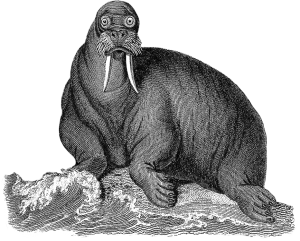
July 9 – 13
On this week’s episode of Galapagos Monday, Ginny explained how conservation biologists tried to make a gigolo out of a 60-year-old virgin.
Michelle explained Tianamen Sid.
Abstruse Goose raged against the assault of jargon.
Christie told us about the two kinds of thinking it takes to do science
And TGIPF continued with guest poster Jennie Dushek, who explained why ladies are made of sugar and spice and penis bones.
Extra credit: how did T-Rex get down? Find out at the Daily Mail, the UK’s finest news source. Hat tip: Clare.
This is the third installment of the occasional series Thank God It’s Penis Friday. The first was on banana slug sex; the second on Iceland’s Phallological Museum.
 Today we are going to talk about penis bones. The penis bone, or baculum, is the supportive bone in the penises of most mammals. Relax, you didn’t miss anything: humans are among a minority of mammals that don’t have one. Mice, rats and all the other rodents have tiny bacula in their tiny penises. So do bats, shrews and moles; all the carnivores (bears, lions, weasels, dogs, cats); their aquatic relatives the seals, sea lions, and walruses; and nearly all primates, not excepting our close relatives the chimpanzees and gorillas.
Today we are going to talk about penis bones. The penis bone, or baculum, is the supportive bone in the penises of most mammals. Relax, you didn’t miss anything: humans are among a minority of mammals that don’t have one. Mice, rats and all the other rodents have tiny bacula in their tiny penises. So do bats, shrews and moles; all the carnivores (bears, lions, weasels, dogs, cats); their aquatic relatives the seals, sea lions, and walruses; and nearly all primates, not excepting our close relatives the chimpanzees and gorillas.
The baculum sits in the tip, or glans, of the penis and ranges in size from a few millimeters in gorillas and mice to a quite serviceable 3 inches in larger dogs. And then there’s the somewhat disturbing two-foot long baculum of the walrus. The Internet is rife with mentions of this natural wonder, but nobody says much except that it’s really, really big.
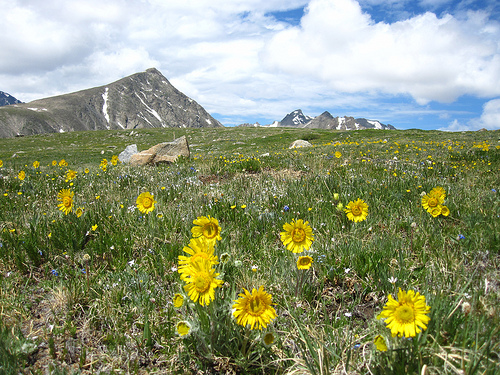 When I was a biology researcher, the strangers I met at parties and on airplanes were always impressed when I told them how I made my living. Evidently, they envisioned my work as something out of Jurassic Park—a thrilling journey packed with breakthroughs and adventures. Few suspected the truth: doing science is mostly about performing mundane, repetitive tasks.
When I was a biology researcher, the strangers I met at parties and on airplanes were always impressed when I told them how I made my living. Evidently, they envisioned my work as something out of Jurassic Park—a thrilling journey packed with breakthroughs and adventures. Few suspected the truth: doing science is mostly about performing mundane, repetitive tasks.
My last research job was in a human genetics lab. For two years, I labored on a map of human chromosome 18. I did experiment after experiment to decipher the order of DNA along the 18th largest chromosome in the human genome. My job title was Professional Research Associate, but I gave myself a more fitting title, which I hung above my lab bench–Liquid Transfer Specialist. Continue reading
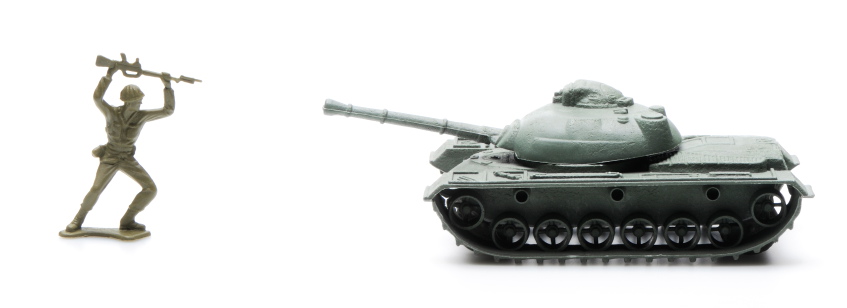 My rural Colorado town, pop. 1,500 on a good day, is in many ways a laboratory-scale model of the U.S.A. We worship both community ties and unfettered independence. We’re gossipy and private, inclusive and provincial, divided by class and dogma even as we gather under our purple mountains majesty. Our community stew comes to a boil at Cherry Days, the annual Fourth of July celebration, and this year’s version — heated by wildfires and record summer temperatures — was extra hot and spicy.
My rural Colorado town, pop. 1,500 on a good day, is in many ways a laboratory-scale model of the U.S.A. We worship both community ties and unfettered independence. We’re gossipy and private, inclusive and provincial, divided by class and dogma even as we gather under our purple mountains majesty. Our community stew comes to a boil at Cherry Days, the annual Fourth of July celebration, and this year’s version — heated by wildfires and record summer temperatures — was extra hot and spicy.
The 66th annual Cherry Days parade was notable for its lead vehicle, a well-preserved Korean-War-era tank complete with a pair of anti-aircraft guns. Even more notable is the tank’s owner: billionaire Bill Koch, brother to the liberal bêtes noires Charles and David Koch. Continue reading
